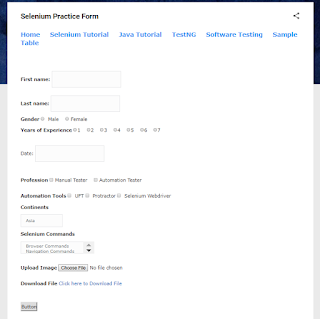AI and Data Privacy: Striking a Balance Between Innovation and Protection
Artificial Intelligence (AI) has emerged as a powerful tool with the potential to revolutionize industries, transform daily life, and address complex problems. However, this technological advancement has raised critical questions about data privacy and security. In this comprehensive article, we'll explore the relationship between AI and data privacy, the challenges it presents, and how responsible practices and regulations are crucial to finding the right balance between innovation and protection.
1. Data Collection and Usage:
AI systems rely on extensive datasets to function effectively. This data can be sourced from various channels, including user interactions, customer behavior, and patient records. However, there's a critical distinction between data collected and how it is used:
1.1. Data Collection:
- AI systems often collect vast amounts of data, which can include personal information, browsing history, location data, and more.
- This data may be voluntarily provided by users or automatically generated as part of their interactions with digital platforms and services.
- In some cases, data can be anonymized to remove personally identifiable information (PII), but the process is not foolproof, and re-identification remains a concern.
1.2. Data Usage:
- AI systems analyze and process collected data to make predictions, automate tasks, or deliver personalized experiences.
- This can involve profiling users to understand their preferences, behaviors, and needs, enabling AI to tailor recommendations, content, or services.
- The challenge lies in ensuring that data usage aligns with user expectations and complies with privacy regulations.
2. Data Security:
AI's reliance on vast datasets makes these repositories attractive targets for cyberattacks and data breaches. Ensuring robust data security measures is essential:
2.1. Data Encryption:
- Implement strong encryption protocols to protect data both in transit and at rest. This safeguards data from interception and unauthorized access.
2.2. Access Control:
- Implement stringent access control mechanisms to restrict data access to authorized personnel only. Role-based access control (RBAC) can help manage permissions effectively.
2.3. Regular Auditing:
- Conduct regular security audits and vulnerability assessments to identify and mitigate potential threats. This proactive approach helps identify and address weaknesses before they can be exploited.
2.4. Data Resilience:
- Establish data backup and recovery procedures to ensure data availability in the event of a data breach or system failure.
3. Bias and Discrimination:
AI algorithms can inherit biases present in the data they are trained on, leading to discriminatory outcomes. This bias can manifest in various domains, such as lending, hiring, and criminal justice:
3.1. Data Bias:
- Data used to train AI systems may reflect historical biases or societal prejudices present in human decisions and records.
- For instance, biased historical hiring practices can result in AI models that favor certain demographic groups over others.
3.2. Algorithmic Bias:
- AI algorithms, when trained on biased data, can perpetuate and even exacerbate existing biases.
- This can result in unfair outcomes, such as biased loan approvals or discriminatory hiring practices.
3.3. Addressing Bias:
- Identifying and mitigating bias in AI models is a significant privacy and ethical concern.
- Techniques such as bias auditing, re-sampling, and fairness-aware algorithms are being developed to reduce bias and promote fairness in AI applications.
4. Transparency and Explainability:
Understanding how AI systems arrive at decisions is challenging, particularly in complex deep-learning models. Lack of transparency can undermine trust and raise privacy concerns, especially when sensitive decisions are involved:
4.1. Black-Box AI:
- Deep learning models, in particular, are often described as "black boxes" because their decision-making processes are not readily interpretable.
- Users may not know how their data is used to make decisions, which can erode trust and raise concerns.
4.2. Explainable AI (XAI):
- Research in explainable AI (XAI) aims to make AI systems more transparent and interpretable.
- XAI techniques provide insights into why specific decisions are made, enhancing user understanding and trust.
5. User Consent:
Obtaining informed consent for data collection and usage is a critical ethical and legal consideration:
5.1. Informed Consent:
- Users should have a clear understanding of how their data will be collected, processed, and used.
- Consent mechanisms should be transparent, and users should be given choices and control over their data.
5.2. Privacy Policies:
- Organizations should provide comprehensive privacy policies that outline data usage practices and comply with relevant privacy regulations.
- Users should have easy access to these policies and be encouraged to review them.
Examples of AI and Data Privacy Concerns
1. Healthcare and Medical Records
Concern: In healthcare, AI systems are increasingly employed to analyze patient data, including medical records, diagnostic images, and genomic information. While these applications promise significant advancements in diagnosis and treatment, they simultaneously raise privacy concerns about the security and confidentiality of sensitive health information.
Example: Imagine an AI system that analyzes medical images to detect diseases such as cancer. To function effectively, this system needs access to a vast database of patient images and records. If not properly secured, this data could be vulnerable to unauthorized access, potentially revealing personal health conditions, which is a significant breach of privacy.
2. Personalized Advertising
Concern: Online advertising heavily relies on AI to analyze user behavior, preferences, and browsing history to deliver targeted and personalized ads. While this benefits both advertisers and users by showing relevant content, it also raises concerns about user tracking, data profiling, and the potential for intrusive advertising practices.
Example: When you browse an e-commerce website or use a social media platform, AI algorithms continuously collect and analyze your behavior, including your clicks, searches, and interactions. This data is then used to create detailed user profiles and deliver tailored ads. While this personalization can enhance the user experience, it can also feel invasive if users are unaware of how their data is being collected and used.
3. Autonomous Vehicles
Concern: Self-driving cars are a prime example of AI in the automotive industry. These vehicles use AI and sensor technologies to navigate and make split-second decisions. However, data generated by these vehicles, such as location, driving behavior, and sensor data, can be collected and transmitted to manufacturers or service providers, raising concerns about surveillance, data security, and potential misuse.
Example: Autonomous vehicles record a wealth of data related to driving routes, speeds, braking patterns, and even passenger conversations. This data is valuable for improving the safety and performance of self-driving cars. However, if not properly protected, unauthorized access to this data could compromise user privacy and potentially lead to issues such as tracking or surveillance.
Balancing Innovation and Data Privacy
To strike a balance between AI innovation and data privacy, organizations and developers must adopt a comprehensive approach:
1. Privacy by Design:
Integrating privacy considerations from the initial design phase of AI systems is crucial. This includes implementing data minimization strategies, where only necessary data is collected and processed. Additionally, anonymizing data when possible can help protect user privacy. Prioritizing informed user consent and transparent data usage practices is also essential.
2. Data Encryption and Security:
Implement robust data encryption and security measures to protect data both during transmission and storage. Regularly update and patch systems to guard against vulnerabilities that could be exploited by malicious actors.
3. Ethical AI Practices:
Develop and adhere to ethical guidelines for AI development and usage. Addressing bias in AI algorithms is a critical aspect of responsible AI development. It's important to ensure fairness and equity in AI applications, especially when making decisions that impact individuals.
4. Transparency and Explainability:
Strive to make AI systems more transparent and explainable. Providing users with clear explanations of how their data is being used and how AI decisions are made can foster trust. When users understand the processes behind AI-driven decisions, they are more likely to feel in control of their data.
5. User Education:
Educate users about data privacy risks and best practices. Empower them with knowledge about how their data is collected, used, and protected. Offer options for users to control their data, including the ability to opt out of certain data collection practices.
Regulations and Compliance
Regulatory bodies have recognized the need to address data privacy in the context of AI. Several regulations and frameworks have been established to ensure responsible AI practices:
1. General Data Protection Regulation (GDPR):
The GDPR, enforced in the European Union, mandates strict data protection requirements. It includes provisions related to user consent, data breach notification, and the right to be forgotten, giving individuals more control over their data.
2. California Consumer Privacy Act (CCPA):
The CCPA grants California residents specific rights over their personal information and requires businesses to provide transparency about data collection and usage.
3. Ethical AI Guidelines:
Professional organizations, such as the Institute of Electrical and Electronics Engineers (IEEE) and the Partnership on AI, have developed ethical AI guidelines to promote responsible AI development and usage.
The Future of AI and Data Privacy
As AI continues to advance, the relationship between technology and data privacy will remain intricate. Striking the right balance between innovation and protection is an ongoing challenge that requires vigilance, collaboration, and ethical commitment. Responsible development, robust security measures, adherence to ethical guidelines, and compliance with regulations will be essential to ensuring that AI continues to bring positive transformations to our world while safeguarding individual privacy and data security. Ultimately, the future of AI and data privacy hinges on our ability to adapt, evolve, and prioritize ethical considerations as technology advances.









.png)










Comments
Post a Comment